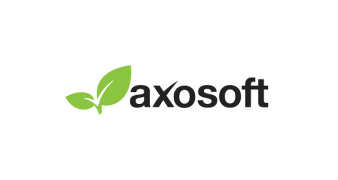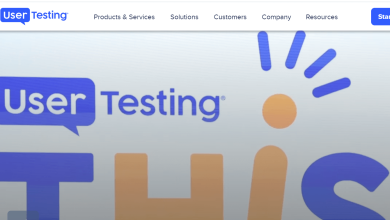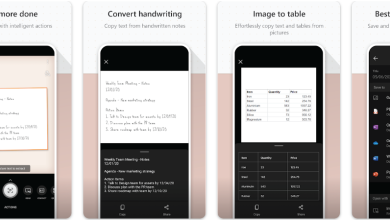Best Agile Project Management Tools Top 5

When your team works on software development projects or similar client work, you’ll eventually have to decide which project management method to use.
If you use agile methods, it’s best to stay organized and give everyone a clear picture of the job from the start. This is now easier than ever to do. As the practice of agile project management grows in popularity, more and more resources are available to aid in its implementation.
Why Agile Methodologies Are Better
You may already know agile and waterfall, the two most common ways to handle projects. Even though some projects work better with one or the other, there is proof that, on average, agile methods are better.
Studies show that the agile method for managing projects works 64% of the time, while the waterfall method only works 49% of the time.
That’s partly because it makes it easy to keep iterating and make quick, small steps toward project goals. Breaking projects into smaller builds that can be built and tested simultaneously by self-organizing and self-managing teams can help your business get more done than it would with a straight approach.
Agile project management also allows you to test and release products more quickly, which is great for meeting deadlines and impressing investors and customers.
Staying on top of agile processes means doing a lot at once, so you’ll need a centralized source of truth to make them work. With the right software platform, team members can work together, focus on minor, easy-to-solve problems, and keep track of future tasks and work in progress without slowing down the whole project.
What is software for managing projects in an agile way?
Agile project management tools make it easier to handle all project stages, from planning to development to testing to making a long-term product roadmap. The best agile project management software helps teams work better together, make more money, and make customers happier.
Most of the software in this group will have the following features:
- Boards or plans for organizing and seeing tasks
- Tools for managing time and other resources
- Calendars and project plans can help you keep track of time.
- Tools for working together to make team discussion easier
- Choices for making and managing workflow
- A way to make product roadmaps
How Professional Services Use the Agile Method
Agile methods may be used differently by professional services companies than by software engineers. A client-based business needs perfect internal coordination so that no critical steps are missed and keeps meeting customer expectations. Because of this extra responsibility, you must find agile project management software that fits your work style and business.
Creating a truly agile process may also require changing how people think and act. Your team might need to learn what it means to be agile, especially if you don’t work in software development. Before you bring in new software, it’s a good idea to train them well in your chosen way.
Then, to help your team use the agile method, we suggest using a platform that works in the cloud and connects projects with sales, quotes, tickets, retainers, timesheets, billing, and scheduling.
But if you want a project management tool that stands alone, here are five that have been shown to help handle agile teams.
1. ActiveCollab: Best for Tracking Tasks and Billable Hours

ActiveCollab is meant to be the center of your organization’s workspaces. It combines several tools, such as job management, time tracking, and billing, and makes it easy for teams to work together in each area.
At any point in the workflow, tasks can be assigned and tracked, and the whole team can see everyone’s parts on a system-wide calendar. This lets everyone know where they stand in the progress of a project. ActiveCollab checks how tasks are going in real-time and how close time predictions are.
Features:
- Keeping track of tasks is easy with the dashboard, which shows all changes and progress.
- You can find what you need with search and filtering of jobs.
- Integration with tools for email
- A holistic view of the calendar
- Tool for writing together
- Timer built in to track billable hours
- Reports on time spent and billing
Pros:
- The drag-and-drop design makes it easy to use
- Solid, trustworthy work
- Price was fair
- Features for keeping track of time and billing
Cons:
- Scrum doesn’t have any built-in sprint tools.
Pricing:
- Gives a free 14-day trial
- Cloud: $7 per member per month for simple features, $4 per member per month for more features
- Discounts for payments made once a year
2. Jira Agile: Best for Software Developers and Sprints

Software workers mostly use Jira because it works best for that project. Even though it can now be used for more than just tracking bugs, the program was initially made to do just that. Several agile methods, like Scrum and Kanban, can be used with the program.
Users make roadmaps for projects, which help keep track. You can use a drag-and-drop interface to handle each project. This lets you plan sprints and give tasks to team members.
Software development teams give Jira high marks for being flexible and having a wide range of features that meet their needs and help them improve.
Features:
- Scrum board
- Kanban boards
- Tasks and subtasks
- Dependency management
- Customized processes
- Plans for the long run need road maps.
- Detailed reports
- Gantt charts
- Aids for working together
- Follow-up on milestones
Pros:
- Good bug-tracking tool for managing problems
- Several connections and plug-ins make it easy to change.
- Designed for rapid methods, especially Scrum
- Desktop and mobile versions
- Charts and graphs are great ways to show how work is done.
- Easy to use if you know how the agile technique works.
Cons:
- The user interface is hard to use for people who aren’t coders.
- No tools for teams to work together
- No plan for keeping track of progress
Pricing:
- Gives a free 7-day trial
- The free plan is beneficial and can be used by up to ten people.
- $7 a month per user for ten or more people
- The premium plan costs $14 a month per person.
3. Pivotal Tracker: Best for Workflows and Transparency
![]()
Pivotal Tracker is a story-based project-tracking tool that helps you keep track of jobs from when they are first thought of to when they are finished. Each job is considered a story, and its difficulty level can be ranked. This tool makes it easy to keep track of workflows and talk to clients.
Everyone can do their part in the project better if they can see what the team’s interests are and what their own goals are. Pivotal Tracker has a project monitor to see where the build is, a whiteboard for conversations, and a daily log of tasks that have been finished.
At a glance, everyone can see the shared work, the team’s state, who is responsible for what, and the next steps.
Features:
- Task control based on stories
- Points can be given to it depending on how hard a task is.
- Interface with drag-and-drop
- Real-time teamwork
- Enables more than one team
- Rich integrations
- Workspaces for multiple projects
- Sharing of files
- Integrations by the dozens
Pros:
- All team members should be able to see and understand all tasks.
- Straightforward ways to talk to each other
- Flows that work well and are optimized
Cons:
- You must learn the Pivotal agile structure before using its tool.
- You have less freedom to put your processes into the software.
- No automatic way to do things
Pricing:
- Gives a free 30-day trial
- Free for one to five people to work together on up to five projects.
- $10 per month for six to ten people to work together
- $6.50 a month per team member for 11 or more people who work together
4. Trello: Best Free Collaboration Solution

Trello is one of the best-known and most popular tools for managing projects. That means many people are familiar with its design, and many tools you may already use have Trello built in. For example, Chrome plug-ins let you connect Trello to everything from time management tools like Pomodoro to Gmail.
Trello is set up based on the Kanban system for managing agile projects. But Trello is also easy to use with the Scrum structure.
Trello shows each project clearly on a board of cards that can be moved around and put into lists. You can add comments to Trello cards, link files or notes, set due dates, make checklists, and connect them to other apps. Atlassian is in charge of the software, which makes it like Jira’s twin.
Features:
- Easy-to-use layout with drag-and-drop
- Use labels, tags, and notes to keep things in order.
- Upload from local media, Dropbox, and Google Drive
- Notifications of deadlines
- Emails that send themselves
- Encrypting, backing up, and getting information
- Mobile-friendly
- Tasks given to people or groups
- Choices for voting and talking
Pros:
- Free version available
- Well-organized and easy to use.
- Used a lot and in a style that’s easy to recognize
- It’s easy to change things on the fly.
- Tools that work well with others
- A power-up schedule makes it easy to put things in order of importance
- Free for a lot of people
Cons:
- No bar chart (Gantt) for a job.
- Only one board or project can have each job.
- You can’t change comments.
Pricing:
- The free version only has a few features, lets each team have up to ten boards, and users can only connect files up to 10 MB in size.
- Full functionality costs $9.99 per person per month.
- The Enterprise version, which has more tools, costs $17.50 per monthly user.
5. Axosoft: Best for Direct Customer Interaction

Axosoft, an agile project management system, uses the Scrum framework. The interface lets teams make plans, map out process steps, and work together to identify and solve problems as they come up.
Axosoft puts all the information and details about each product into a “backlog” and shows which team member is working on each job and how it is going. Users can drag and drop jobs, bugs, and user stories to give them to someone else or mark them as done. Burndown charts show how fast the team gets to the project’s goals. There is also a Kanban-style card view.
Help Desk has a tool that turns emails into tickets for help. Customers have their site, which lets them talk to the team directly about their needs and suggestions. This direct contact can save a lot of time for the team and make customers feel like they are part of the process.
Axosoft also has a team blog, which gives people a lot of room to share details and information about a project.
Features:
- Client portal supports customer teamwork
- Cost-to-completion, time, expenses, and goals are all kept track of.
- Internal tools for working together
- Gantt charts to see how things are going
- Easy-to-use board layout
- There are parts for budget, business, and resource management.
- Support for both agile and standard methods.
- Wiki for the team to share information
- Help desk/incident tracking
Pros:
- Workflows that are easy to change and well-organized
- Clear views of the plan and accurate tracking of time for sprint management
- Burndown charts show you how far along a team is.
- Strong data display features
Cons:
- The learning curve is steep
- User design feels dated
- Less ability to keep track of time
Pricing:
- Offers a free trial for 14 days
- The price for five team members in the cloud starts at $105 per month.
- Installed options start at $1,250 for five team members.




